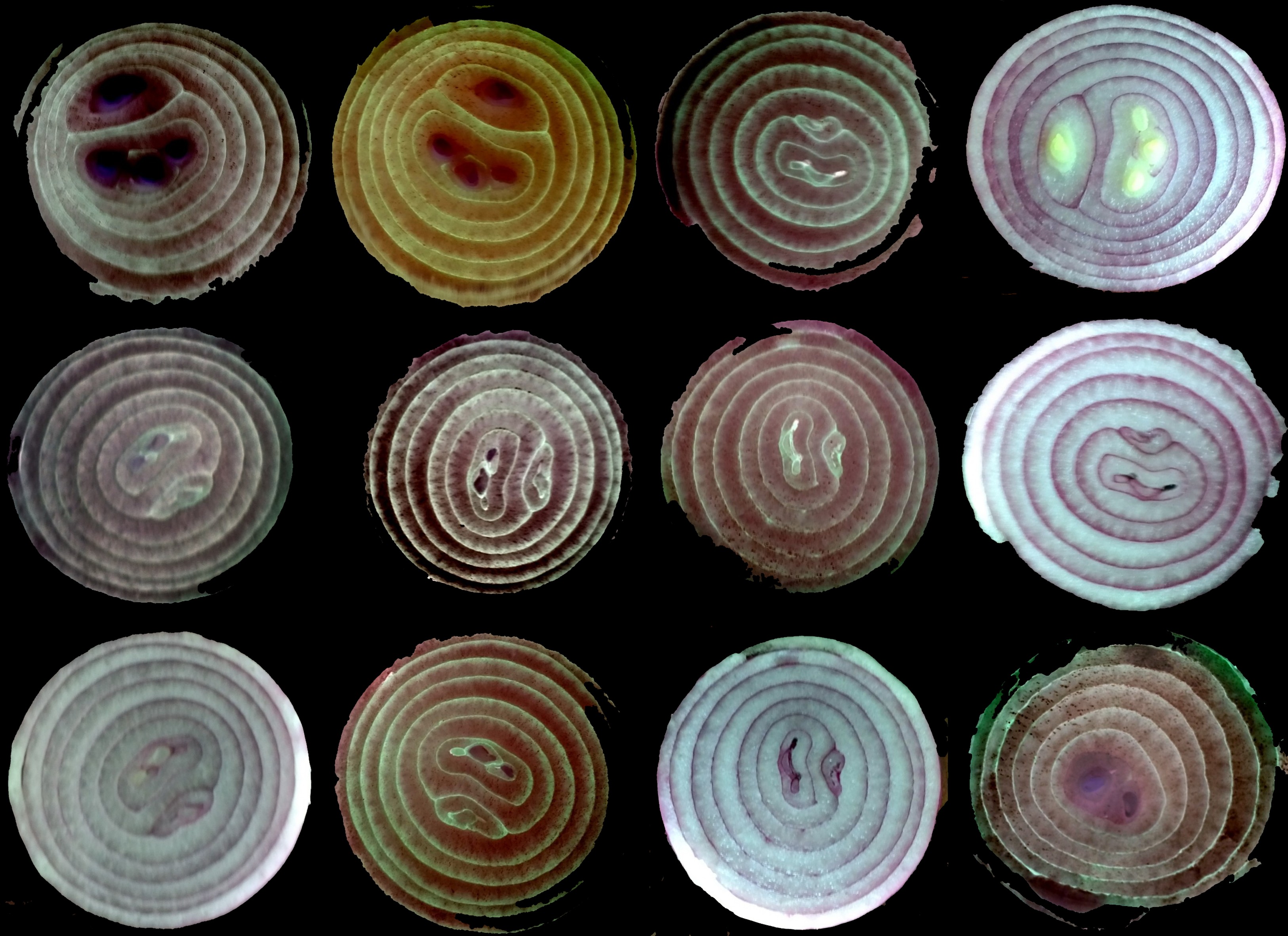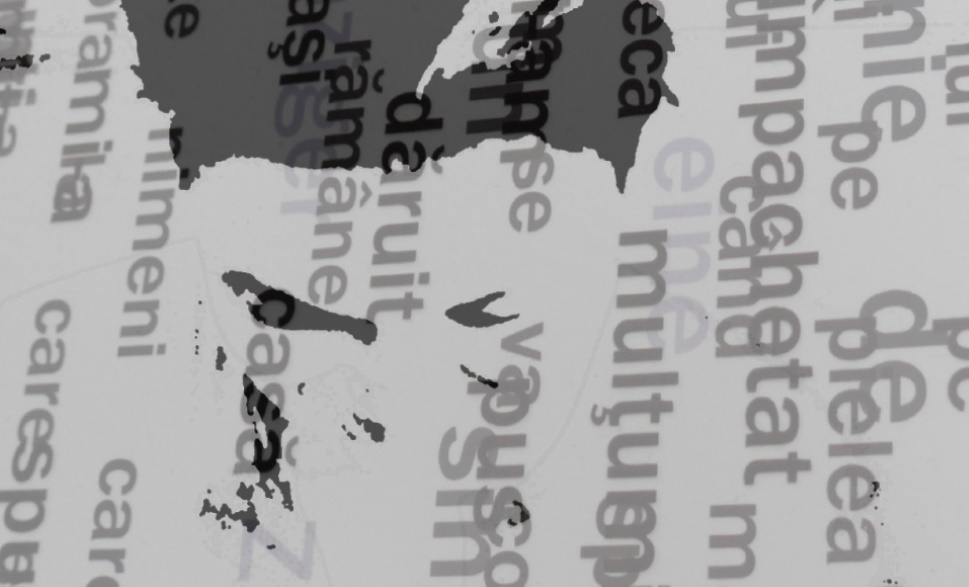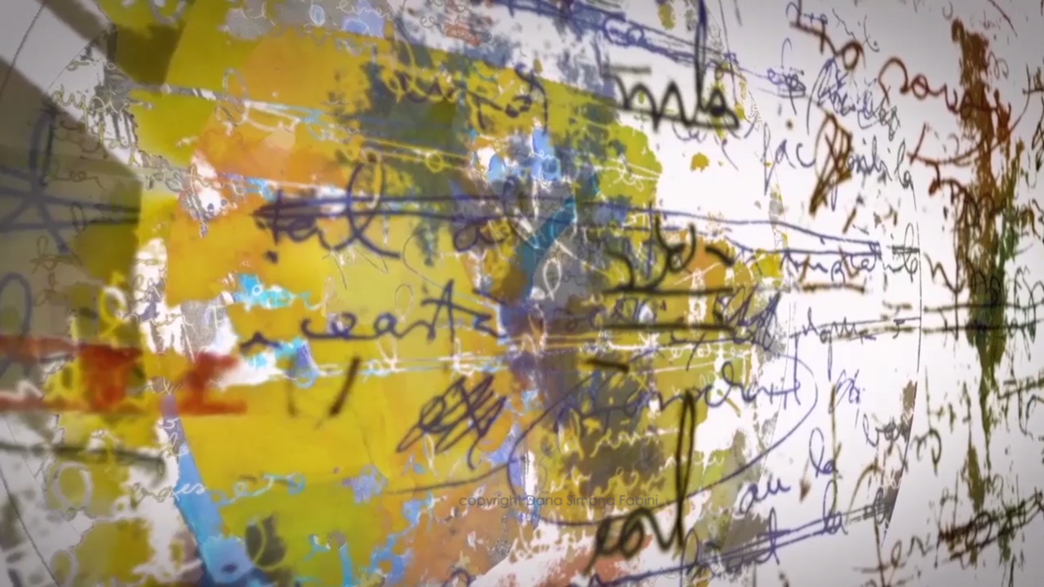passing by
My life has always moved between reality and fiction, like a nebulous cloud.
When I was young I wanted to live by the sea or the ocean. The boundless sight of water, in every wave of shades, inspires me with the longing for love, for travel. It was only later that I discovered the unshakeable mountains, their lofty heights heal my longing; looking at them I am in the immediate present, without projections of the imagination. I understand that life can be totally (un)serious. Its experiences keep reoccurring until I find the inner serenity that I need.
Photos made in the same place in different days or different moments of the same day / 2024, in memory of Caspar David Friedrich


Links
Library References
internal exile / ensure survival
Internal exile sets in when everything people do around you seems foreign, absurd, atrocious. Internal exile can be experienced in one's own culture, in one's own community, by each of us who has lost something essential, a sense of wholeness or value. Paradoxically, however, it is this inner exile that can sometimes make us empathetic towards our peers, understanding the helplessness that underlies their desperate actions. Compassion for the other can ensure survival.
I introduced the concept about the internal exile for the first time in a speech at the international conference Exipora - Exil and Diaspora, Craiova, Romania in 2019, and recently at the round table of the international art exhibition Diasporic, Cluj Napoca, Romania in 2023.

Technique: photo, computer editing; fragment, 2023.
Reading between the lines
There is a legend about King Solomon, who was approached by two women with a newborn child, each screaming, claiming to be the child's mother. The king tried to listen to them to do justice, but from their quarrel he could not understand the truth. So he ordered the child to be cut in two, and each woman to receive half. On hearing this atrocious decision, the child's real mother fell at the king's feet, begged to let the child live and give it to the other woman. The wise king realized that this woman was actually the child's mother. He knew that sometimes it is necessary to give up your claim to ensure survival.
Links
PERFECTUM
you walk in the deserted palace garden, wearing an invisible hummingbird on your head, looking straight to the sky
you know that at the slightest start of the eyelids, the hummingbird may be frightened and fly to the red moon
where no one can reach it
without it your image is no longer the same, like in your childhood on the cover of the most beautiful book
where you live in perfect harmony with your soul

series of photos and text-images, 2021-2022
Reading between the lines
As a person who studied in Romania during the dictatorship, and the beginning of the artistic career during the transition to democracy in this country, freedom is more important to me than success. But current art wants to be accessible to as many people as possible and this kind of widespread success ends up simplifying the forms of artistic expression and even reducing relationships between people. The art of the 20th century is of the past-perfect domain. When the artistic paradigm changes, we probably have to start over every time with (fairy) tales that introduce new values.
I remember a real-life situation a few years ago when a friend was trying to raise her teenage daughter to live up to noble ideals, and she got the answer: Mom, you wanted to change the world, I just want to shop!
Library References
Muza vitregă / Die Stiefmuse / The Stepmuse
an artist book (visual poetry), the third volume of the series Bibliotheca Diotima - selection of texts and images by Dana Fabini, published by Editura Eikon, Bucharest, as a limited and bilingual - German and Romanian - edition.
Series ISBN 978-606-711-891-9 (appeared since 2018), volume ISBN 978-606-49-0321-1 (published 2020).
image detail and book excerpts from art critics in German and Romanian, 2020

Dr. Vianu Mureșan: Diotima, spektrale Muse und Inspiration
Auszug aus dem Vorwort des Künstlerbuches Bibliotheca Diotima: muza vitregă /die Stiefmuse
Original auf Rumänisch, Übersetzung von Christian M. Fabini
Kehren wir nun in die heutige Zeit zurück, geben wir zu, keinen Kontakt zur Muse zu haben, keine Gewissheit über ihre Existenz, aber dennoch in bestimmten Momenten als Künstler und Dichter ein Erlebnis der Inspiration. Wie kommt das, wie erklären wir diesen merkwürdigen Umstand, dass die Muse, an die wir nicht glauben, uns dennoch inspiriert? Kann die Wirkung bestehen bleiben, wenn die Ursache, das zugrunde liegende Prinzip verschwindet? Ich schlage vor, diese Besonderheit, nämlich die Inspiration, deren Quelle wir nicht identifizieren können, Epiphanie zu nennen.(...) Wenn wir die Dinge so betrachten, brauchen wir nicht mehr philosophisch herumzureden, auch nicht kulturell überfrachtete Thesen und Theorien über unser griechisches Erbe im Namen unserer raffinierten Bildung zu formulieren, bloß weil wir etwas über griechische Musen und Künstler wissen. Wir können sie komplett ausblenden, wenn wir nicht auf die betreffende Tradition zurückgreifen wollen, wenn ihre Erwähnung als reine akademische Pedanterie erscheint, aber auf die Inspiration können wir nicht verzichten. So sind also die Musen gestorben, die von ihnen inspirierten Dichter sind tot, aber die Inspiration ist nicht verschwunden. Dies ist das Wunder der Epiphanie. (...) Dana Fabinis künstlerisches Schaffen unter dem Schirm der Diotima übernimmt wie von selbst deren Philosophie zur Natur und Aufgabe der Liebe, zur Inspiration und de facto zur Gründung der künstlerischen Individuation.
Prof. Dr. Peter Ulrich Hein: Die Magie der Zeichensprache
Auszug aus dem Nachwort des Künstlerbuches Bibliotheca Diotima: muza vitregă /die Stiefmuse
Dana Fabinis Reaktion auf die divergierenden Ansprüche an die Kunst besteht zunächst darin, dass sie in mehreren Gattungen zu Hause ist, diese jedoch gleichwertig nebeneinander existieren lässt. (...) Zum Teil kooperieren die unterschiedlichen Gattungen und Materialien miteinander, etwa bei den mit Schrift überlegten Fotos und Bewegtbildern, was wiederum an eine aktuelle Bühnenästhetik erinnert. Zugleich aber funktionieren die zusammengeführten Elemente durchaus als eigenständige Objekte. Vielfach erinnern die Arrangements an Prozesse, die im akademischen Bereich als „experimentelle Gestaltung“ gelehrt werden. (...) Die zur Schrift sich formierenden und dissoziirenden Buchstaben entfalten eine dementsprechende magische Wirkung ständiger Wiederholung in neuer Gestalt. Idioplastische Zeichen, also Einträge in die Materialien der unmittelbaren Lebenswelt binden gerade in der Konsumwelt ein mythisches Potenzial, welches über die Profanität eben dieses Alltags hinausweist.(...) Film, Folie, Projektion gehören in den Handwerkskasten jeder Art von Desktop-Publishing, sei es in der Medienkunst oder im normalen Büroalltag. Doch auch in diesem profanen Kontext – so könnte man ihre Botschaft verstehen – behält die Schrift etwas von ihrer ursprünglichen Magie.
Links
Library References
The Secret Tablets
a playful, subtle and irritating video (loop 2:26 minutes, 2019) about cultural truth and fake, about artistic inspiration, imitation and appropriation from ancient tablets to the contemporary tablets.
direction, performance poetry and images: Dana Fabini
music: Nicolas Simion (jam session)
video animation: Ligia Smarandache
camera: Sorin Irimieș

Note: The Secret Tablets is also the name of the art show, presented to the public in October 2019 at the Transsylvanian National History Museum in Cluj Napoca. The exhibition included video, photos, text-images and artist editions. It was designed as a contemporary intervention in an archaeological exhibition, already opened in the museum, of the ceramic tablets discovered in Tărtăria. It represented a personal artistic interpretation regarding the divergent opinions on the origin of these tablets, fake and truth on the traces left by the passing of time, but also regarding current artistic concepts. The opening was marked by a happening with the public who was invited to add digital and classical signs / drawings on works of the artist. This solo show was also part of the 4th edition of the International Ceramics Biennale Cluj.
Links
încotro iubirea / wohin die Liebe / where to my love
visual poetry (text images, 2018) - there are many contents, nuances and forms of love and there are so many forms of manipulating it, abusing or destroying it. Having words and having understanding is not the same.
text-images presented e.g. at the German-Japanese-Romanian group exhibition An der Grenze, Halle Zollstock Cologne // exhibition Tête-à-Tête: Dana Fabini & Gavril Zmicală (selection of works), Galeria Galateea Contemporary Art Bucharest // in the artist book (selection) by Dana Fabini: Bibliotheca Diotima: încotro iubirea / wohin die Liebe, published by Editura Eikon, Bucharest, 2018, limited edition, ISBN 2: 978-606-711-892-6
detail of text image, digital experimental print, watercolor paper, ecoline ink, 2018

Dana Fabini: Notes on the exhibition Tête-à-Tête
Statement -excerpt from the opening speech at the Galeria Galateea Contemporary Art, 17.07.2018
Original in Romanian, English translation by Laura Zmicală
text published in the catalogue Tête-à-Tête: Dana Fabini & Gavril Zmicală, Editura Eikon, Bucharest, 2018, ISBN 978-606-711-859-9
(...) There is the highly popular idea among visual artists that an image does not need words as it speaks for itself. (...) Fewer artists try the path in the opposite direction, the one in which words express images. I am not referring to either metaphors and comparisons or to narratives and scenarios, as they are working techniques or methods. I am referring to the semantic, morphologic and syntactic capacity of words to function as a shape or figure against a background, in the same way as a painting or any other purely visual image. (...) I am referring to a visual linguistics. (...) Recent theories of semantics point out that linguistic expressions denote specific entities, which are not necessarily real entities, but can also be abstract ones. According to a metaphysical ontology of platonic origin, abstract entities are better perceived with the eye of the mind. I have always composed text-images, being fascinated with the purely visual sequences of the syntaxes, of the graphic and calligraphic signs of various languages, seduced by their grace and dynamics, by their significance and their abstraction. My first work as an art student (in 1983), made without any imposed theme or external guidance, was a code of graphic signs personally composed of known and unknown letters and numbers, of legible and illegible words, of meaningful and meaningless sentences, of paraphrases full of significance and morphological silence. I was told that this did not belong to the visual arts. (...) (So) please allow me in the context of this exhibition, in this face-to-face between material and idea, (between artist and his work), to invoke some more words (...) that accurately define (...) the significance of the work of art: “Transposing into a notion something that is not notional in character is very difficult. Poetry does not have a notional character, although it uses the notion as a brick in the construction. Its final significance is an emotional, a metaphoric and a visionary one. Confusing the material with the significance of the material is a very easy and very damaging approach.”
(quote: Romanian poet Nichita Stănescu in the TVR Interview Creatorul și opera sa / The creator and his work, moderated by Alexandru Stark, 1982, TVR archive, Original in Romanian)
Links
Library references
Waiting Room: Loneliness
the short film (4:22 minutes, 2017) is a metaphor about mystic love and solitude. In the spirit of the Song of Songs and Madhura-bhakti poetry, it experiences the contrast between unity and separation. Poetry and performance are based on repetitive structures as in a loop, the hole scenery evokes the shadow theater.
direction, poetry, voice, performance: Dana Fabini
setting, film editing: Ligia Smarandache
camera: Marius Popuț
sound recording: Mircea Kiraly
English translation: Christian M. Fabini
presented e.g. at performance Art Museum Cluj Napoca // GEDOK group exhibition Freiburg // international film and video event Blaue Stunde VIII Cologne // project Dialog in Agora Domforum Cologne, 2017

Links
#100DADA
this video (9:59 minutes, 2016) is a tribute to Dada art movement
using poetry, music and text-images it alludes to the alchemy of artistic languages and presents the work of art as a magic terra incognita
direction, poetry, voice and images: Dana Fabini
music: Nicolas Simion (bass clarinet, flute), Markus Vögeler (guitar)
video animation: Ligia Smarandache
presented e.g. at international video and film event Blaue Stunde VII Cologne // German Romanian group exhibition Dialog in Agora. Arheologie contemporană Casino Centru de Cultură Urbană Cluj Napoca // performance Rumänische Bibliothek Freiburg, 2016
the fragment here (2:27 min.) concentrates on the creative power of words - see below the link to YouTube channel

Vianu Mureșan: literary portrait of Dana Fabini / work #100Dada
Orginal in Romanian, German translation by Christian M. Fabini
excerpt from Dialog in Agora. Arheologie contemporană, published by Editura Eikon, București 2016, ISBN 2: 978-606-711-519-2
Șoapte de liniște, șoapte de absență
Stau într-o sferă de cuvinte. Circumferința ei lucește orbitor. Dacă o privesc, din ochii mei se scurge liniștea de sub pleoape. Liniștea e un tablou care nu încape cu totul în răstimpul dintre două clipiri. Cuvintele se mișcă, mutate de jocul privirilor mele. De jocul gândurilor mele. Citesc șiruri de propoziții, care vorbesc numai și numai despre mine, dar nici una nu e adevărată. Niciuna nu conține liniște destulă. Când mintea mea tace, apa care mișcă cuvintele în sferă se liniștește. Sfera se golește. Meditez, apa dispare, cuvintele dispar, sfera dispare, eu dispar. Meditația dispare. Rămâne numai sunetul pe care-l face în aer liniștea dispariției mele. Când se face liniște, eu sunt și nu sunt în egală măsură. Când se face liniște, absența mea mă ține pe brațe încolăcită ca un cuvânt. Sunt temă în tabloul liniștii mele.
Șoptesc dintr-o sferă de cuvinte. Șoapte de iubire, șoapte de tăcere, șoapte de liniște. Șoapte de absență. (...)
Tac într-o sferă de cuvinte. Când tac, e semn că undeva dincolo de gând liniștea își aduce de mine aminte.
Flüsternde Stille, flüsternde Abwesenheit
Ich wohne in einer Sphäre aus Worten. Ihre Hülle glänzt hell wie das Sonnenlicht. Wenn ich sie betrachte, verrinnt aus meinen Augen die Stille unter den Lidern. Die Stille ist ein Bild das nicht ganz in den Augenblick zwischen zwei Lidschlägen passt. Die Worte bewegen sich, verschoben vom Spiel meiner Blicke. Vom Spiel meiner Gedanken. Ich lese reihenweise Sätze, die von mir und nur von mir reden, aber keiner davon ist wahr. Keiner enthält die nötige Stille. Wenn mein Geist schweigt, kommt das Wasser das die Worte in der Sphäre bewegt zur Stille. Die Sphäre leert sich. Ich meditiere, das Wasser verschwindet, die Worte verschwinden, die Sphäre verschwindet, ich verschwinde. Die Meditation verschwindet. Es bleibt nur der Klang den die Stille meines Verschwindens an die Luft weitergibt. Wenn es still wird, bin ich und bin gleichermaßen nicht. Wenn es still wird, hält mich meine Abwesenheit auf ihren Armen eingerollt wie ein Wort. Ich bin Thema im Bild meiner Stille.
Ich flüstere aus einer Sphäre aus Worten. Flüstern der Liebe, Flüstern des Schweigens, Flüstern der Stille. Flüstern der Abwesenheit. (...)
Ich schweige in einer Sphäre aus Worten. Wenn ich schweige, ist das ein Zeichen dass irgendwo jenseits des Gedankens die Stille sich meiner besinnt.
